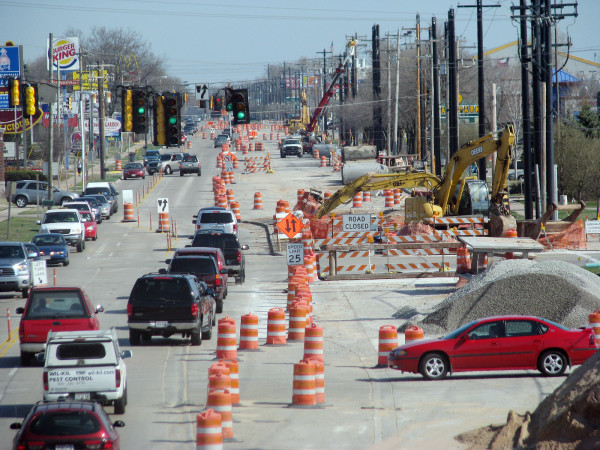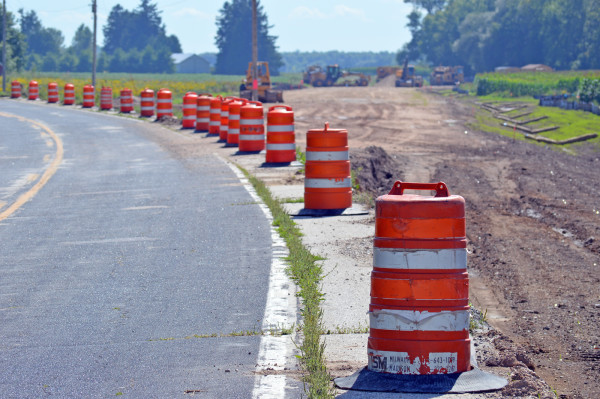Why Does It Take So Long To Fix My Street?
 Our engineers and surveyors have a lot of face-to-face time with residents and businesspeople each year as they are working on road construction projects. A common question we hear is: Why does construction take so long?
Our engineers and surveyors have a lot of face-to-face time with residents and businesspeople each year as they are working on road construction projects. A common question we hear is: Why does construction take so long?
People wonder – understandably – why construction crews sometimes seem to come in, rip up a street, and then let it sit for weeks or months before finishing the job.
Several things factor into this perception of no-progress construction projects. Sometimes the perception is real (equipment issues, scheduling problems, or utility surprises), and sometimes the perception is false. The latter involves situations where work is being completed on a portion of a project that is not visible to everyone.
Here are some common factors:
Ins and outs of contractor mobilization: “To keep costs down, the contractor tries to minimize the number of times they mobilize crews and equipment,” says Andy Dana, a transportation engineer in our Green Bay, Wisconsin, office. “This means they will wait until a large enough section of the project is ready before calling in base course and paving crews.”
Any given project can have many different contractors who like to keep their personnel and equipment as busy as possible, so if they cannot proceed for any reason (utility work, curing concrete, etc.) on one job, they will sometimes pull their crew off a site temporarily and move them to another job.
Construction prices usually increase when the schedule is tighter or if there is very little flexibility.
Steps A-Z : Craig Schuh, a municipal engineer in Green Bay, says replacement of underground utilities can really stretch out a project. “First you have removal of the existing street, and then you have replacement of sanitary sewer, next water main, and finally storm sewer before the roadway can be reconstructed,” he says. “If you have curb and gutter, that would occur after replacement of the existing base course. Next you will have the pavement surface, typically asphalt pavement for a residential street, and then sidewalk/landscaping to follow.”
The domino effect: Because each street project often has multiple contractors and subcontractors – and each of those firms is juggling multiple projects throughout the construction season – a delay in one project can cause a ripple effect on other projects. “A delay or unanticipated circumstance on one project can throw even the best laid master schedule into turmoil,” Darci says, “causing delays on other projects or even a lag in work altogether such that no progress is being made on a project for a while until crews are available.”
A long time curing: “One thing many people don’t realize is that the curb can be poured and look hard … the next day,” Craig says. “But that fresh concrete needs several days, typically a week, for it to reach a strength that will allow heavy equipment to operate near it without damaging it.”
Hot and cold, wet and dry: An obvious problem for construction crews is poor weather, but it’s not just rain that can lead to delays. Asphalt and concrete can only be placed within a certain temperature range.
So, in a nutshell, there’s more to a construction project than meets the eye.


Post a comment: